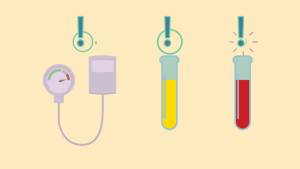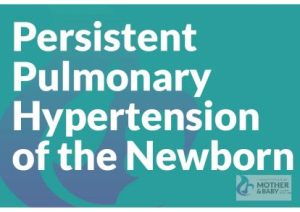What is Gestational Diabetes?
Gestational Diabetes is the name given to diabetes which occurs for the first time during pregnancy. Gestational Diabetes (GDM) affects up to 12% of pregnancies in Ireland, and that number is rising as obesity levels rise in tandem.
What happens when you have gestational diabetes?

In pregnancy, a lot of changes happen in the body. Hormones are released and metabolic changes happen to make sure the baby in the womb receives enough nutrients. One of the changes that happens is called insulin resistance.
Insulin is a hormone that is produced by the pancreas. It helps the body move sugar from the bloodstream into the cells of the body, where the sugar is then used for energy. Insulin allows the cells of your body to use the sugar consumed in your diet and helps keep your blood sugar level from getting too high or too low.
When the body is not able to adapt to these changes this results in Gestational Diabetes.
Symptoms and risk factors
Gestational diabetes does not result in any apparent symptoms. However, certain characteristics can make GDM more likely;

-
-
-
-
-
-
-
-
-
- if you are overweight,
- if you’ve previously had a baby who weighed 10lbs or more,
- have Polycystic Ovarian Syndrome,
- have a family history of diabetes,
- if you’ve had gestational diabetes in a previous pregnancy,
- or are of South Asian, Black Caribbean or Middle Eastern descent
-
-
-
-
-
-
-
-
Testing for Gestational Diabetes
A test for gestational diabetes may be recommended for you, and is carried out typically between 24 and 28 weeks of pregnancy.
The test used to diagnose GDM is called a glucose tolerance test. The GTT will usually include some form of fasting the evening before the test. A blood test will be done before having anything to eat or drink.
Then something sweet and sugary will be given (like a jug of Lucozade!) and two more blood tests will be taken at hourly intervals. This way, the results from all tests can be compared, and it is easy to see how high your blood sugar rises after sugar is ingested. This allows the doctors or midwives to judge whether gestational diabetes is present.

Gestational Diabetes usually disappears after the baby is born, but it is still very important to recognise it and treat it. This can minimize the risk of short and long term complications to mother and baby.
by Meadhbh Aine O’Flaherty
How to treat GDM

You have just been given a glucose tolerance test and found out you have gestational diabetes (GDM) – what happens next and what does that mean for you and your baby?
The good news is that it’s very important to identify and diagnose GDM, because that means it can be treated and managed, which can reduce the risk of any complications.
Complications of Gestational Diabetes
Complications of gestational diabetes can include:
- A higher risk of developing preeclampsia than women without GDM.
- Women with GDM are at higher risk of having a large baby, which is called macrosomia. When a baby is macrosomic, their shoulders and abdomen are often disproportionately larger than their heads. This makes passage through the birth canal more challenging and can result in shoulder injuries, prolonged delivery, and reduced oxygen supply to the baby.
- Having a larger baby can also cause problems for mum during delivery which can result in a caesarean section or birth injury.
- Preterm delivery
- Breathing problems in the newborn
- Low blood sugar in the newborn.
- Women with GDM are at higher risk of developing type 2 diabetes and cardiovascular disease later in life than women with non-diabetic pregnancies.
- Children born to mothers with GDM have an increased risk of obesity and diabetes later in life.

Monitoring diet, exercise and blood sugar
If you have gestational diabetes, you will need to carefully monitor your diet, exercise and blood sugar. For example; drinking less fruit juice and fizzy drinks and eating less chocolate and refined starch. Whole grains, lean protein and fresh vegetables are better choices for mums dealing with gestational diabetes. It is really important not to skip or miss meals, as this helps to keep your blood sugar balanced. Regular exercise can also help!

If you have gestational diabetes you may also need to learn how to check your blood- sugar levels and record your results.
For most women with gestational diabetes, it should be possible to control the condition and keep sugar levels within a normal range. You can do this by making dietary adjustments and by increasing levels of exercise. However, for a minority of women with gestational diabetes, exercise and diet will not be enough. These women will require medication (either oral sugar-lowering medication or insulin) during pregnancy. More frequent check-ups will be recommended if you are using insulin during your pregnancy. This is to ensure that your blood sugar is well controlled and that there are no further complications arising which could affect you or the baby.

Gestational diabetes should go away after birth. However, your blood sugar levels will be tested at your 6 week postnatal check-up. This is to ensure that you no longer have any signs of diabetes. Make sure to remember that if you have had gestational diabetes that you could be at risk of developing type 2 diabetes further down the road and should get tested by your doctor every 1-2 years.
With a bit of planning it is possible to have a healthy and happy pregnancy while dealing with gestational diabetes!
by Meadhbh Aine O’Flaherty



 Persistent Pulmonary Hypertension of the Newborn (PPHN) is the long and difficult name of a breathing complication that can affect the ability of newborn babies to supply their body with the oxygen it needs. This occurs in roughly 2 out of every 1000 newborns after birth. Treatments are available and can result in a positive outcome for the baby.
Persistent Pulmonary Hypertension of the Newborn (PPHN) is the long and difficult name of a breathing complication that can affect the ability of newborn babies to supply their body with the oxygen it needs. This occurs in roughly 2 out of every 1000 newborns after birth. Treatments are available and can result in a positive outcome for the baby.



